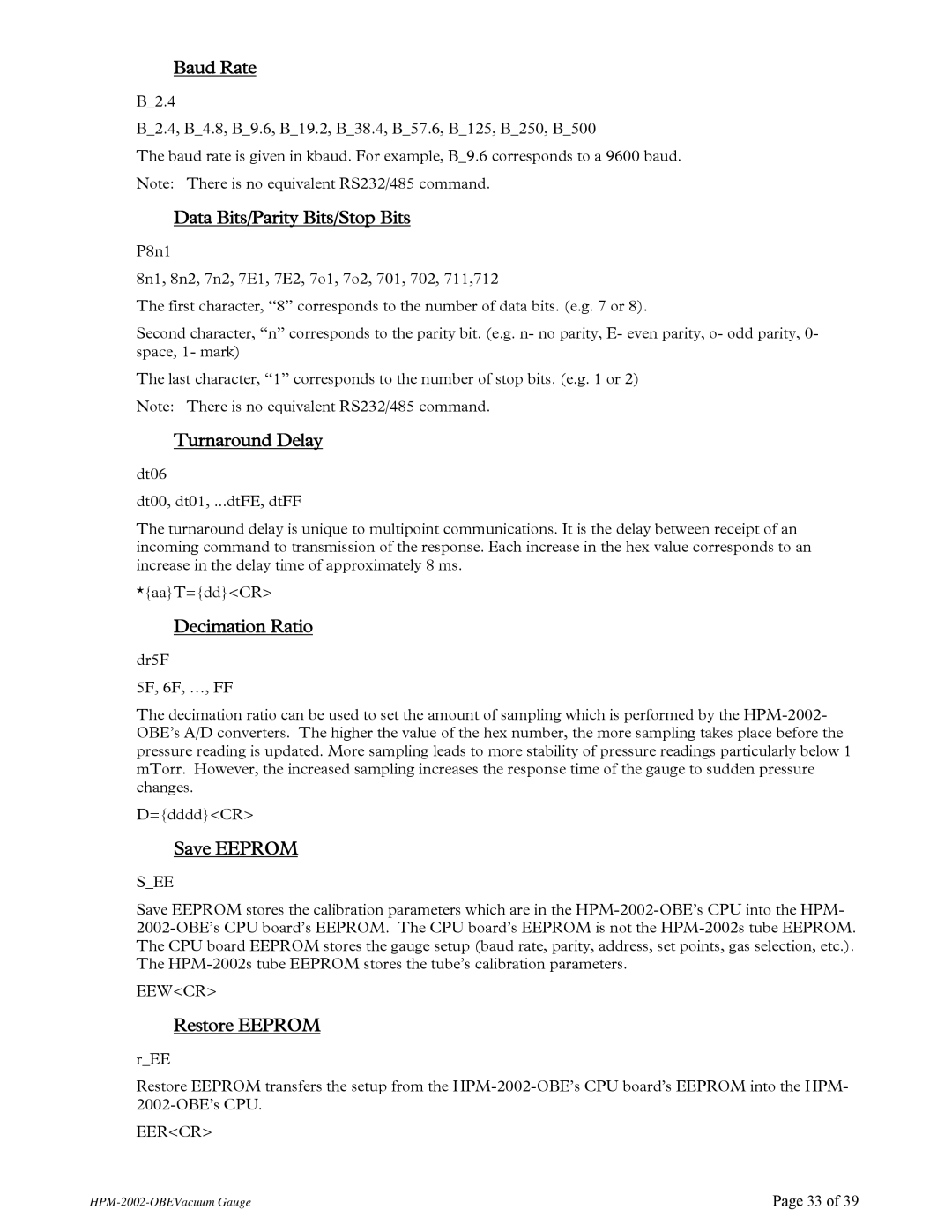Baud Rate
B_2.4
B_2.4, B_4.8, B_9.6, B_19.2, B_38.4, B_57.6, B_125, B_250, B_500
The baud rate is given in kbaud. For example, B_9.6 corresponds to a 9600 baud. Note: There is no equivalent RS232/485 command.
Data Bits/Parity Bits/Stop Bits
P8n1
8n1, 8n2, 7n2, 7E1, 7E2, 7o1, 7o2, 701, 702, 711,712
The first character, “8” corresponds to the number of data bits. (e.g. 7 or 8).
Second character, “n” corresponds to the parity bit. (e.g. n- no parity, E- even parity, o- odd parity, 0- space, 1- mark)
The last character, “1” corresponds to the number of stop bits. (e.g. 1 or 2) Note: There is no equivalent RS232/485 command.
Turnaround Delay
dt06
dt00, dt01, ...dtFE, dtFF
The turnaround delay is unique to multipoint communications. It is the delay between receipt of an incoming command to transmission of the response. Each increase in the hex value corresponds to an increase in the delay time of approximately 8 ms.
*{aa}T={dd}<CR>
Decimation Ratio
dr5F
5F, 6F, …, FF
The decimation ratio can be used to set the amount of sampling which is performed by the
D={dddd}<CR>
Save EEPROM
S_EE
Save EEPROM stores the calibration parameters which are in the
EEW<CR>
Restore EEPROM
r_EE
Restore EEPROM transfers the setup from the
EER<CR>
| Page 33 of 39 |
